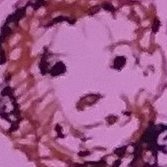Search the Community
Showing results for tags 'monkey king'.
Found 3 results
-
Back in November, I joined a small temple on a religious pilgrimage to the south of Taiwan. Their flavor of folk Daoism focuses on self-mortification rituals performed by spirit-mediums (Taiwanese Hokkien: Tangki, 童乩; Chinese: Jitong, 乩童; literally: "Divining Child"), who are believed to channel the spirit of their god, in this case the "Great Sage Equaling Heaven" (Qitian Dasheng, 齊天大聖), better known as the Monkey King Sun Wukong (孫悟空). The self-mortification serves several purposes. First, hacking, skewering, and poking the body with various weapons is considered a form of self-sacrifice. Second, the weapons that pierce the flesh are believed to imbue the Tangki with spiritual power needed in their battle with demonic forces that pervade every corner of daily life. Third, the resulting blood is believed to have demonifugic properties, hence the reason it is smeared on paper talismans and clothing. Overall, the ritual is performed to exorcize evil spirits that cause bad luck and mental and physical illnesses. The Tangki wear ritual bibs normally associated with babies in Asian culture. As noted above, the Hokkien/Chinese word for spirit-medium means “Divining Child”. This refers to the centuries-old belief that children were the mouthpiece of gods. In fact, the mediums are known to speak in a shrill voice known as “shen (神, god) language”. The fact that their back is bare refers to ancient Shang-Zhou period rituals in which a sacrificial victim was exposed to the elements. Though small, the temple I accompanied, has an astounding seven Tangki, each who channels one of seven monkey god spirits. Five joined the pilgrimage, including the senior Tangki, his son, and his disciples. The ritual they performed to ensure the trip’s safety was the same as that completed at each of the temples we visited. The Tangki donned their ritual garb, the aforementioned bib and a tri-panel apron, and held a command flag in their left hand as they formed a line. A young acolyte (or sometimes the senior Tangki) held an incense pot up to their face until they worked themselves into a trance. Once the monkey god spirit took over, the Tangki struck a martial pose and held out their right hand, thus signaling an attendant to bring them a ritual sword (this was completed for each Tangki in turn). The first Tangki walked out to the center of the specified area (in front of the temple) and pointed to the ground with the sword, where attendants set fire to spirit money in a small metal pan. The Tangki waved their command flag over the fire before hacking their back with the sword. Then they performed a ritual walk to a new location and lit four more fires. The five fires in total represent the celestial generals of the five cardinal camps (N, S, E, W, and Center), which are led by the monkey god in combat. The following Tangki start with a sword but change to different weapons at each new fire pot. These include an ax, a spiked club, a saw fish nose sword, and a spiked ball. All the while, temple members play drums and gongs. The weapon hits are superficial but still draw enough blood to drip down the back. Spirit money is tucked into the back of the pants to soak up the blood. Once the ritual is over, their backs are sprayed with alcohol and briefly wiped. It’s interesting that the blood almost immediately stops flowing. The hacking is performed so much that their backs are left in a permanent raw, pink state. I must note that the self-mortification ritual performed by this temple is quite tame compared to what I’ve read about in Thailand, Malaysia, and Singapore, where they skewer their cheeks and backs with all manner of rods, spears, and hooks. I have video of the ritual. I’ll try to add some in a future post. In the meantime, please enjoy these photos. And before I forget, Happy New Year! !!!BLOOD WARNING!!!
-
One of the details that led to my current interest in things broadly Daoist is my infatuation with the classic Chinese novel, Journey To the West. The historical journey of the historical Buddhist scholar Xuanxuang is the touchstone for the tale of the Monk Sanzang Tang and his guardians. Film and TV versions abound - there's even a weak adaptation on Netflix in "The New Adventures of Monkey" (And a ghost of the tale is cast across "Into the Badlands" as well). A compendium of characters and situations from Chinese myth and legend, each of which is brought in line with the rising tide of Buddhist ideals in what I am assured (By Scott Park Phillips, repeatedly, in both of his books) is a process that mirrors village ritual, it's also a rip-snortin' tale of derring do, rescues and magic abound, and how did I get this far without mentioning Sun Wukong, the Handsome Monkey King, ego drenched avatar of the active mind and hero of the story? (The Monk may be protagonist, but we're here for the Monkey King) Only with great effort, I assure you. A book for readers, the four volumes took me a couple of year to get through the first time, but well worth the investment. Many philosophical points about the junction of Daoism and Chinese Buddhism raised (frequently, inconclusively) on this forum are answered in the context of the story. The stories spark so much room for side study, and here's someone who puts some effort into just that; https://journeytothewestresearch.com/ Wonderful books in a wonderful modern translation by Anthony C. Yu.
-
I am an American who became interested in Daoism though martial arts movies and Chinese literature. I currently live in Taipei, Taiwan where I teach English as a second language. My hobby is to visit local temples and record various rituals. For example, here is a ritual wishing a happy birthday to Qitian Dasheng ("Great Sage Equaling Heaven"), a.k.a. the Monkey King (he is worshiped in southern China, Taiwan, Malaysia, and Singapore). I'm not sure of the specific school, though. One scholar I asked initially suggested Chanhe (a school heavily influenced by Buddhism), but later changed his guess to some generic, modern Taiwanese brand passing as Quanzhen.
- 4 replies
-
- 4
-

-
- journey to the west
- monkey king
- (and 6 more)



